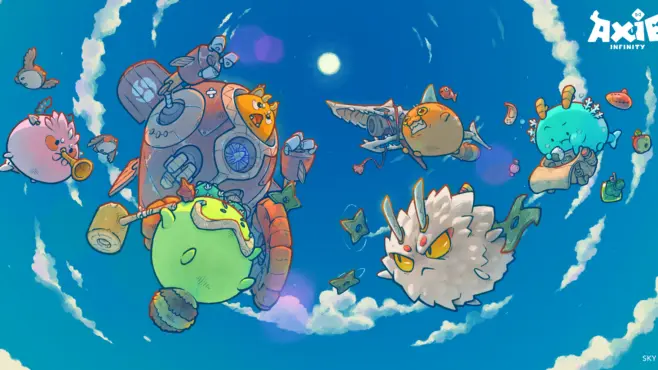
Superficially, Axie Infinity isn’t much of a departure from your typical online multiplayer game. Players begin by purchasing an ‘Axie,’ a small, bulbous creature used to earn in-game currency called ‘smooth love potion’ (SLP.) This is achieved either by pitting these otherwise gentle creatures against those of other players in gladiatorial combat, or by using them to complete a series of ‘quests’ over the course of a day. Winning enough of either nets the player enough tokens to spend on augmentations for your Axie or breed them, thereby offering a fractional advantage in the next match or quest.
So far, so conventional. But what has made Axie Infinity stand out from the crowd so successfully is that the stakes behind these fictional fights and quests are very real indeed. Built on the Ethereum blockchain, Sky Mavis not only designed Axies as functional NFTs, making them tradeable assets, but also made the in-game currency fully convertible with other cryptocurrencies and, by extension, real money. As a result, players that accumulate enough Smooth Love Potion can theoretically make a tidy profit from grinding the game for several hours straight – a prospect that helped attract some 1.8 million daily players last August.

For the studio behind the game, Sky Mavis, Axie Infinity’s ‘play-to-earn’ model is the future of online gaming. While the idea of buying assets in-game has been around for decades, that had only ever seen the financial rewards of play concentrated in the hands of developers. Making those assets tradeable outside its confines, however, would see some of that money pass back into the hands of players. Indeed, vast sums have already been traded, with one Axie being sold for approximately $130,000. In October, Sky Mavis raised some $152m in Series B funding led by venture capital firm Andreessen Horowitz, valuing the developers at some $3bn.
Income at the player level is not nearly as high. For many, though, it’s still been transformative. A Filipino crypto-trader, Ijon Inton discovered Axie Infinity in February. “After a week of playing I was amazed with my first income,” he told Coindesk, having earned an average of $206. In a country whose economy has been ravaged by the pandemic, the game represented a vital opportunity for a stable income (Axie is also immensely popular in Venezuela for similar reasons.) As such, Inton quickly convinced his family to play Axie Infinity virtually non-stop, to the point where the game’s developers asked Inton to send video proof of them playing to rule out the possibility that they were bots.
Stories like Inton’s make it seem like Axie Infinity is living up to its initial promise, articulated in its white paper, of ‘empowering players and giving them economic opportunities’ that were otherwise scarce. Others, however, see the game as nothing more than a means for exploiting the vulnerable and dispossessed. Evidence of this can be found in the in-game phenomenon of players loaning access to their Axie’s to earn passive income, argues author and crypto-sceptic David Gerard. “It costs several hundred dollars to get yourself three of the Axie’s,” says Gerard. Consequently, “you have players with more money buy those and then rent them out to poor people” in return for up to 40% of their SLP earnings.
The high prices of Axie’s have also made players less likely to breed and trade them, instead choosing to cash out their winnings. This, in turn, has led to an oversupply of SLP tokens and a slow decline in their value in recent months, all of which has reduced earning opportunities for the game’s player base in the developing world. According to a recent report by the consultancy Naavik, Axie players in the Philippines were only earning just above the country’s minimum wage of $7.03 before paying their staking fees.
Sky Mavis responded by stating that the report ‘discounts the community too heavily and focuses on the players that play Axie solely to earn an income.’ The developers have since introduced new measures to curb the inflation of SLP tokens, including capping the number rewarded through quests and more aggressively banning those operating multiple accounts.
For Gerard, however, the game’s core growth model – which, Sky Mavis has conceded, is reliant on a steady supply of new users – means that Axie Infinity will never amount to more than an unintentional pyramid scheme. In time, he believes that an internal economic collapse might do the game a world of good.
“The best thing that ever happened to Second Life was the price of the Linden Dollar crashing,” argues Gerard. As a result, he says, “Second Life is alive and well a decade and a half later, [and] it’s got a few people who enjoy playing it. But it certainly isn’t the festival of hype it was.”






